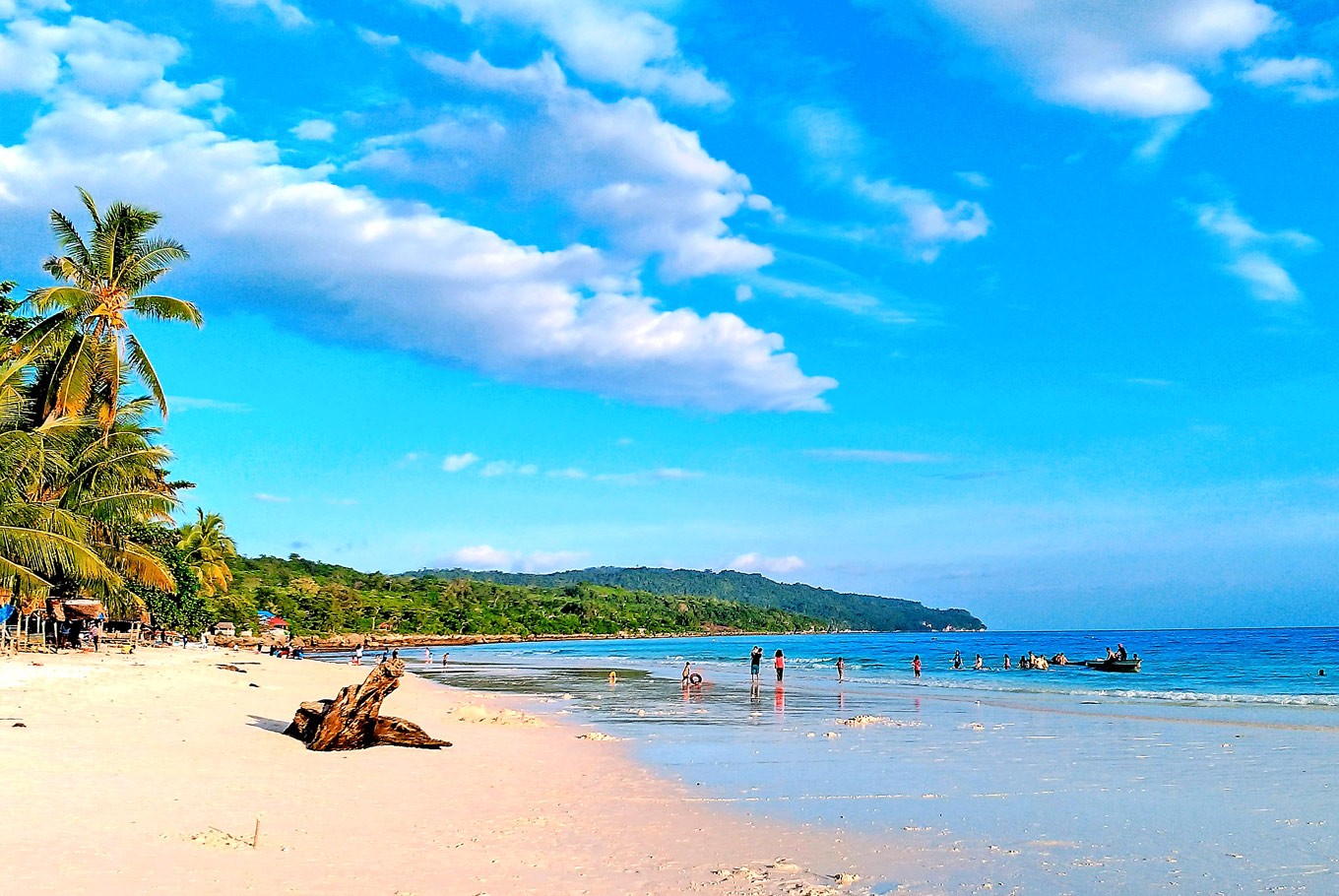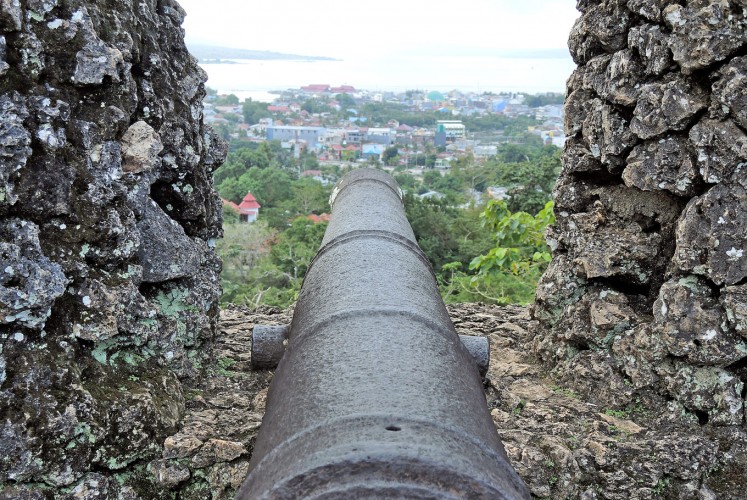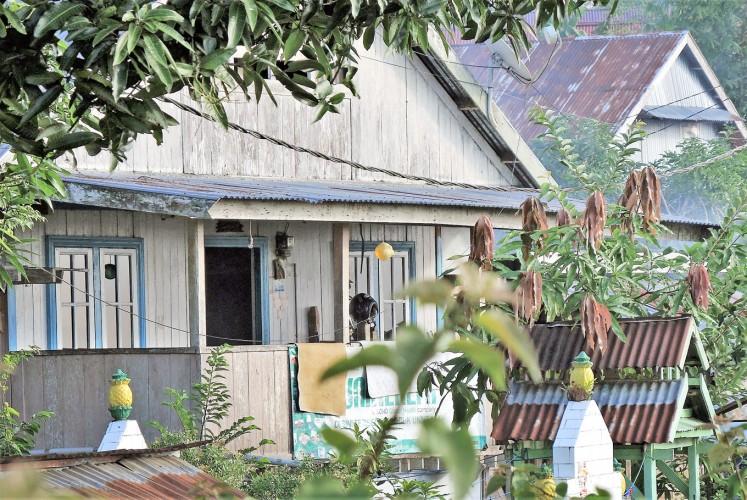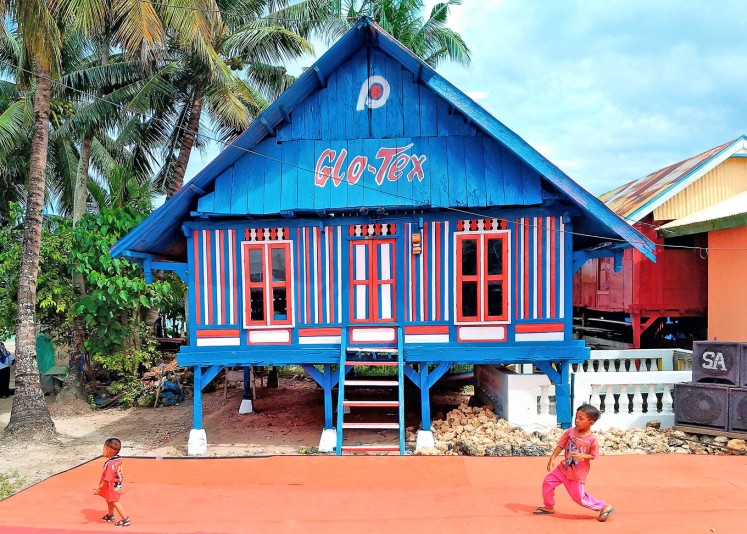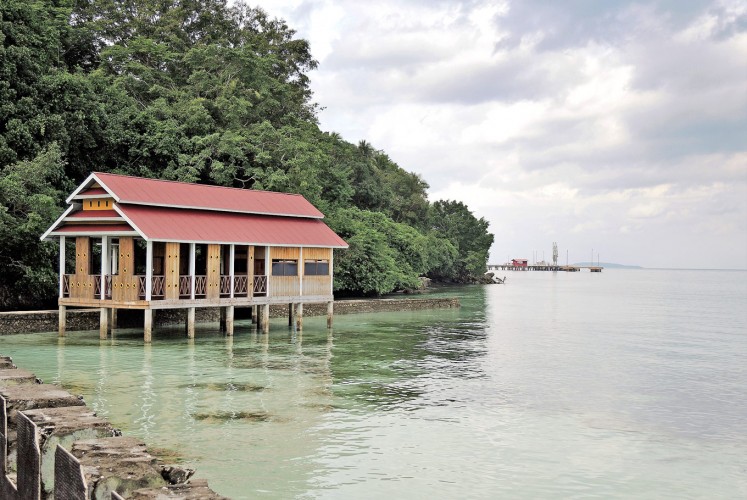Popular Reads
Top Results
Can't find what you're looking for?
View all search resultsPopular Reads
Top Results
Can't find what you're looking for?
View all search resultsButon Island: A gem of fascinating tales
Buton's stories and culture makes it one of the most peculiar yet highly intriguing islands in Indonesia.
Change text size
Gift Premium Articles
to Anyone
A
ny prospective traveler would enter Buton Island through Baubau, an hour’s flight from the South Sulawesi capital of Makassar.
Baubau, the island’s capital, is a bustling little town and pretty developed (but not commercialized) for its tourism.
Baubau sports lovely beaches all along its coast and on the surrounding uninhabited islets. The most well-known among these is Nirwana Beach on the main island, a long stretch of beach bookended by short cliffs and usually the prime holiday destination for locals and tourists alike.
Another significant destination on the island is Desa Tenun (weaving village), famed for its weaving and woven textiles.
The village’s houses, most of which retain the traditional architecture, are painted in bright, loud colors that are also distinctive to the woven fabrics of Buton.
But Buton’s main draw is its historical site, Benteng Keraton Buton (Buton Palace Fortress), which claims to be the “broadest fort in the world” at 23,374 hectares.
The chalkstone walls, originally held together with egg white mortar, stand atop a strategic hill above Baubau and features 12 entrances and 16 cannons pointed toward the coast. Built in the 16th century by the extant Buton Sultanate, the walls initially served to protect the sultan’s palace that sits on a road above the fort. The Buton Palace Fortress held off enemies for nearly four centuries and is one of the primary reasons why the sultanate continues to exist today.
As a traveler sets off from Buton’s only airport in Baubau deeper into the island and ponders their surroundings, they would definitely notice the abundance of statues, ornaments and even streetlights adorned with a figure or image of dragons and pineapples.
Small ornaments of the fruit can be usually found atop streetlights or rooftops, while dragon statues are seen in public spaces and as architectural ornaments. So why the symbolism?
There are many theories about the dragons. The most accepted is that the first historical ruler of Buton Island was a Chinese empress, or one of Chinese ancestry. Another interpretation says that the local people see the dragon as a symbol of strength.
Be a pineapple: Pineapples are one of the symbols of Buton Island and adorn houses and public places throughout the island. (JP/Dylan Amirio)Many stories tell different variations on the myth, which may or may not feature an empress, but all the stories seem to agree that the dragons pay homage to the islanders’ history.
Local man Yoes believes that no one true interpretation of the dragon symbols exists. Many versions have been passed down from generation to generation, and the truth is likely to have been chipped away through the annals of time.
“Many historical tales are deliberately kept secret in order to preserve the actual history. But as a result, it’s become hard for the young generation to understand the true origins of certain things,” he said. “In this case [of the dragon symbolism], people usually go with the most widely accepted interpretation, and that’s what’s happened here.”
Meanwhile, homage to the pineapple are abundant in Baubau and throughout Buton, despite the fact that pineapples do not grow anywhere on the island.
It turns out the reason the fruit was adopted as the island’s symbol was because pineapples can grow in any climate and can adjust to any environment, anywhere.
“[...] The people of Buton Island feel that because they live on an island that provides so much for them, they feel they can live anywhere in the world. That’s why they relate to the pineapple,” Yoes said.
Charming: A traditional house has been painted in the island's textile colors by paint company Pacific Paint. (Pacific Paint/File)Another reason why the pineapple is held in high regard on the island is because of its tough outer skin. The spikes that protrude from the fruit are said to symbolize the island’s strength that it is hard to invade.
Another interpretation is that the sweet fruit symbolizes the desire of the rulers of Buton to lead their people toward a sweet life.
Again, the interpretations are many, but the thread that connects the theories emphasizes the strength and prosperity of Buton.
Beyond its capital, Buton Island is home to two eccentric places that are unique to the island and are anomalies in Indonesia.
One of these is Karya Baru village, where the Korean writing system — Hanggul — is widely used and taught at schools, and are also used on street signs.
This peculiarity is due to the cultural similarities the island’s Cia-Cia people share with Korean culture, especially in linguistic structure.
The story goes that when local academics were searching for a writing system to preserve the dying indigenous language, they found Hanggul to be the most suitable. Karya Baru village then held academic exchanges with South Korean teachers and anthropologists so that they could study and implement the language.
Dock on the bay: A lone house sits by one of Baubau's docks. (JP/Dylan Amirio)Elsewhere in southern Buton is an islet that is home to Kaimbuawa village, where a Portuguese colony set foot on Buton’s shores before the Dutch arrived. The colonists married into the island’s royal family, and to this day, their descendants sport blue eyes as their European ancestors did.
Buton is only one of the little-known gems of the massive Indonesian archipelago, but it is one of the most interesting gems.
___________________
Members of the press, including The Jakarta Post, were invited by Pacific Paint to see the company’s campaign to paint the houses in Kampung Tenun in Buton, Southeast Sulawesi.

